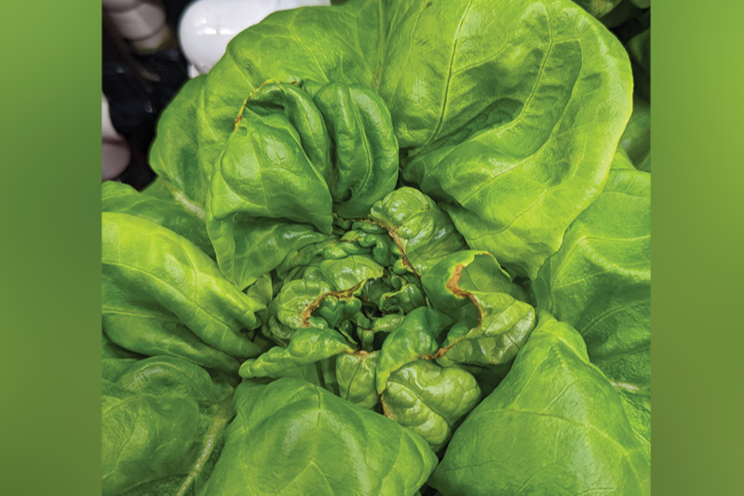Lettuce tipburn sensitivity trial
Added on 03 August 2023

Tipburn is caused by calcium deficiency often seen in lettuce (Lactuca sativa) when plants are grown quickly under optimum environmental conditions. The deficiency is also known as “localized” around young leaves at the shoot tip. Therefore, tipburn occurs even with sufficient calcium fertilization of the whole plant. While the symptom is well described and mitigation methods are discussed (e.g., Mattson, 2015; Kubota et al., 2023), cultivar- specific tipburn sensitivity is not well documented.
Specifically, comparisons among various cultivars supplied by different seed companies under growth conditions inducing tipburn are helpful for growers.
Tipburn-inducing plant growth conditions:
Previous research conducted by many groups have contributed to better understanding which environmental factors induce tipburn in lettuce. In general, conditions that promote overall plant growth (high light, high CO2) yet suppress plant transpiration rate (low air circulation, high humidity) are known to increase the risk of tipburn. In addition, low humidity (high VPD) during nighttime increases tipburn risk in some cases. This is because low humidity at night promotes non- stomatal transpiration (loss of water from leaf surface), reducing xylem pressure and calcium supply to the shoot tip at night (Kubota et al., 2023). Table 1 shows the conditions we selected for testing tipburn sensitivities of 20 selected cultivars of lettuce. Seedlings were grown for 14 days prior to transplanting into hydroponic nutrient film technique (NFT) channels to assess the tipburn sensitivity for the following 28 days.
Photo: Severe tipburn symptom shown in ‘Rex’ lettuce at the time of harvest. Provided by e-GRO.
More news















